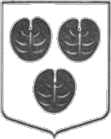
|
The hoogheemraadschap van Rijnland is the oldest water board still existing in the Netherlands and probably the second oldest of all their water boards in the past. Governing institutions of course was in the middle ages a more or less informal activity. One did not need an office, because the secretary of the board did his work at home, sometimes helped by one or more clerks. In 1574 the board of Rijnland bought an already existing house in the main street of Leiden, the heart of its region and a rising textile manufacturing town. The house, three times as big as the average middle-aged house, was meant as the dwelling for the dijkgraaf (dike-reeve; the head of the board) and as stopping place for the six hoogheemraden (the board). The dike-reeve and his wife mostly came from the nobility and they furnished the house according to their rank. In the first twenty years the board doubted if the purchase was a good bargain and considered to sell it. Possibly the uncertain political situation in the first stage of the war against the Spanish (1568-1648) was part of this hesitation, but also the house was not in a good state. In 1598 a decision was made to rebuild the front. That was a difficult thing because the municipality of Leiden planned to build a prestigious town hall for itself on the opposite side of the street and did not want any competition in that field. Eventually a real treaty was concluded between the warring parties and Rijnland got consent to build the present Renaissance façade. The exterior of the house did not change fundamentally after that, only the windows were replaced in the 18th century by Empire windows. The original ones however were restored in a big contemporary restoration (c. 1970). The interior of the house underwent many changes, the most important in the middle of the 17th century. Holland was at that time at the height of his Golden Age prosperity and the word was: impress. And impress the house still does, although in a very modest Dutch way. In the middle of the 17th century Rijnland hired the famous Dutch architect and designer Pieter Post (Mauritshuis The Hague, town hall Maatstricht, another now nearly demolished gemeenlandshuis of Rijnland in Halfweg, half way between Amsterdam and Haarlem). Pieter Post redecorated the most impressive hall of the gemeenlandshuis in Leiden, the courtroom. Dijkgraaf and hoogheemraden had juridical power in matters pertaining to water management within their region. They had high jurisdiction, i.e. the power to pass a death sentence. Also to brand: the marking-iron which was ordered for the only instance we know. For a big part the courtroom was carried out according this function: the ceiling represents a pavillion and open air, with birds and flowers possibly a reference to old Germanic law that justice had to be administered in public, i.e. the open air; a chimney-painting represents Time with all his paraphernalia who offers to Justitia the book of civil law, an allusion to the value of written law against the more doubtful customary law, which was applied by water boards. The painting is from Jan Lievense Sr., teacher of Rembrandt. The whole room is draped with gold leather ornamented with Rijnlands coat of arms, the Dutch lion and the German emperors crown, an allusion to the oldest charter which was given to dijkgraaf and hoogheemraden in 1255 by Roman King and count of Holland, William II. This event was depicted in 1655 on a painting by Cesar van Everdingen, one of the famous Dutch painters of his time (an exhibition of his work will be held this year in the museum Boymans in Rotterdam, later in Frankfurt). Another painting in this room is a portrait of King-Stadtholder William. The portrait in itself is not very interesting, because there are some more of this kind. But the frame, especially ordered by Rijnland is: it represents the coat of arms of the English Kings, the Order of the Garter, apples of Orange. Interesting is the symbolism of the strategic talents of William: military power is symbolised by Hercules, strategic cunning by a woman wielding a bludgeon. There is a red room with a Rembrandtesk
chimney-painting mathematician (Jan Lievense jr); a blue room with a painting
of the gemeenlandshuis in Halfweg (Dirk Maas); an especially built archive
room with a heavy iron door, the Iron Comptoir.
|